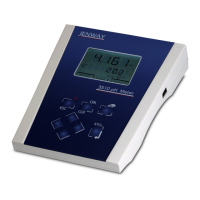What to do if the battery is flat on my Jenway Multimeter 3510?
- DDebra GonzalesSep 13, 2025
If the battery is flat on your Jenway Multimeter 3510, connect the AC power supply.

What to do if the battery is flat on my Jenway Multimeter 3510?
If the battery is flat on your Jenway Multimeter 3510, connect the AC power supply.
| DC Voltage Ranges | 200mV, 2V, 20V, 200V, 1000V |
|---|---|
| Resistance Ranges | 200Ω, 2kΩ, 20kΩ, 200kΩ, 2MΩ, 20MΩ |
| Continuity Test | Yes |
| Diode Test | Yes |
| Overload Protection | Yes |
| Temperature Range | -20°C to 1000°C |
| AC Voltage Ranges | 200V, 750V |
| DC Current Ranges | 200μA, 2mA, 20mA, 200mA, 10A |
| Display | 3.5 digit LCD |
| Current Range AC | 200mA, 10A |
| Capacitance Range | 20nF, 200nF, 2µF, 20µF |
| Frequency Range | 20kHz |
| Battery | 9V |
General purpose pH/mV/Temperature bench meter for routine laboratory analysis.
Technical specifications including pH, mV, temperature ranges, resolution, accuracy, and outputs.
Lists items included in the packaging and reporting shortages or damage.
Instructions for connecting electrodes, ATC probe, and power supply.
Explains the various elements and indicators shown on the instrument's display.
Details the function of each key on the instrument's keypad.
Describes the rear panel layout and function of various sockets and connectors.
Explains the concept of pH, its measurement scale, and the relationship with hydrogen ion activity.
Details the components of a pH measurement system: pH meter, pH electrode, and reference electrode.
Guidance on preparing buffer solutions accurately for calibration.
Explains the importance of buffer solution temperature for accurate calibration.
General guidelines for the care and maintenance of pH electrodes during use.
Details the various user-configurable set-up modes for the instrument.
Describes how to select the buffer type for calibration, including manual entry.
Explains how to set the pH resolution on the instrument's main display.
Details how to select the temperature units (°C or °F) for display and measurement.
Instructions for manually entering temperature when the ATC probe is not connected.
Configuration of serial port baud rate for data communication.
Step-by-step guide for performing pH calibration using manual temperature compensation.
Step-by-step guide for performing pH calibration using automatic temperature compensation.
Lists and explains common error messages displayed by the instrument.
Explains the Absolute and Relative millivolt modes for measurement.
Instructions for performing pH, mV, and temperature measurements.
Details how to store, view, and manage measurement results.
Basic maintenance guidelines for keeping the instrument clean and protected.
Procedures and agents for cleaning and re-conditioning pH electrodes.
Lists available optional accessories, including printers, cables, and pH electrodes.
Lists common spare parts for the instrument and electrodes.
Details the analogue output specifications and voltage per digit.
Explains the RS232 interface connections and pin assignments for data communication.
Describes how to control the instrument remotely via RS232 using keypad commands.
Instructions for connecting and using a serial printer with the instrument.
Illustrates typical header and data printouts from the instrument.
Lists common faults, their possible causes, and recommended actions for resolution.
Describes how to perform checks on the meter's measurement functions.
Instructions for resetting the instrument to its default factory settings.